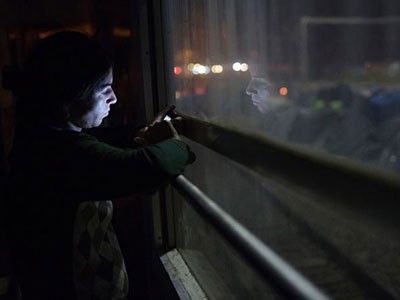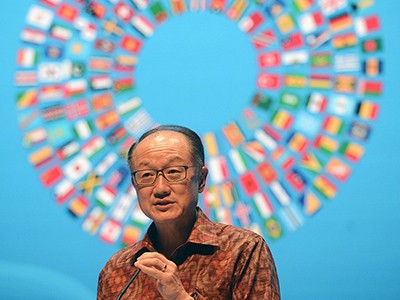
In Singapore more than one million users have downloaded a contact-tracing app. But in any random encounter between two people, there is only a 4% chance that both will have the app.Credit: How Hwee Young/EPA-EFE/Shutterstock
In the toolkit of strategies to stop the spread of SARS-CoV-2, more countries are reaching for smartphone apps. When phones with such an app are close together, they exchange information — in some cases creating a log of who a phone’s owner has been near. These ‘contacts’ will be alerted if they have been close to an infected person. Such apps can complement a country’s overall COVID-19 control strategies — including testing, contact tracing, isolation and social distancing — but they cannot serve as a replacement for them, or the thousands of contact-tracing teams they require.
Like any health-care intervention, coronavirus apps need to conform to the highest standards of safety and efficacy. And yet, despite the pandemic’s global nature, countries are developing apps independently, and there are no global standards — which is rightly raising concerns.
Some countries are already starting to use phones to record data, including names, addresses, gender, age, location, disease symptoms and COVID-19 test results. For example, users of Australia’s COVIDSafe app, launched last weekend, will be contacted by health officials if an app user they have had close contact with tests positive for COVID-19. Germany’s app, which is still in development, will also use actual test results. Australia is storing data centrally, but, after much debate, and expressions of concern from researchers, Germany’s app will store coronavirus data on individuals’ phones. And Egypt’s app, launched earlier this month, uses a phone’s location services to alert users if they have been near anyone with COVID-19.
The United Kingdom’s contact-tracing app is to be launched soon and will require users to describe their symptoms; it is not yet clear whether it will also link to test results. Data will be stored centrally and users will allow the health authorities to alert the person’s contacts.
Time to discuss consent in digital-data studies
Use of all of these apps is voluntary, as it should be. In most cases, the apps are being developed by governments working with technology companies and researchers. But, considering that citizens are being asked to give up their personal data, there has been little national public consultation. Another cause for concern is the fact that there is scant published evidence on how effective these apps will be at either identifying infected people who have not been tested or, if widely used, stopping the spread of the disease. Governments are excitedly pointing out the benefits, but are saying less about the risks.
Key questions need answers
One serious concern is accuracy. Apps that link to official validated tests are obviously more likely to give accurate results. An alert based on self-diagnosis that turns out to be wrong — a false positive — could, of course, be corrected. But if incorrect information has been sent to a large group of contacts, it will have caused unnecessary alarm, and could have wrongly sent people into isolation for weeks.
An equally important concern is privacy. As we have pointed out before, it is becoming easier to identify individuals from anonymized data sets. Researchers have shown that it is possible to re-identify individuals even when anonymized and aggregated data sets are incomplete1.
Researchers are also raising concerns about the decision some countries have taken to store data centrally. Earlier this month, nearly 300 researchers signed an open letter reminding governments that data stored in many different places — such as individual phones — are more secure, and that data stored in one place are more susceptible to hacking.
Why the World Bank ex-chief is on a mission to end coronavirus transmission
And then there’s the communications technology itself. Most apps share information using Bluetooth, a radio-frequency technology that allows devices to exchange information at close range. This is convenient, because most smartphones have it. But it has a history of security breaches that have been much-reported and studied. Smartphone users are usually advised to turn off Bluetooth when it is not needed, and especially when in close proximity to other phone users. But to work, COVID-19 apps need users to keep Bluetooth running — particularly when they are in public places.
COVID-19 apps have, to some extent, been inspired by the experiences of South Korea and Singapore — where electronic surveillance methods have helped to control infections. South Korea, in particular, is regarded as a model because it avoided severe lockdowns. Some 3 months after the outbreak spread to the country, only a handful of new cases are being reported daily and 244 deaths have been recorded in total.
But the foundation for South Korea’s COVID-19 response is a comprehensive testing strategy, backed by a nationwide network of contact-tracers who interview infected people and trace their contacts. The strategy includes the use of phone alerts, but not the Bluetooth apps being developed elsewhere. More importantly, it is based on a degree of surveillance that people in many other countries will find hard to accept.
When a person tests positive for COVID-19, a text alert is sent to everyone living nearby. This alert typically includes a link to a detailed log of the infected person’s movements — in some cases to the nearest minute. These movements are reconstructed from public data, such as closed-circuit television cameras. But the South Korean government is also permitted to access confidential records, such as credit-card transactions. The data are then stored centrally by government agencies. At the same time, people’s movements are anonymized and published online.
Much attention has also been paid to Singapore’s TraceTogether app, which now has more than one million users. Although this amounts to roughly one-fifth of Singapore’s population, it still means that in any encounter between two randomly chosen people, there is only a 4% chance that both will have the app. This points to one of the deepest flaws in digital contract-tracing plans anywhere: the fact that only a fraction of any population is likely to have the app at all. And such efforts will miss out anyone who, for any reason, doesn’t have a smartphone. TraceTogether’s developers have warned in a white paper that the app is intended to help human contact-tracers — not to replace them.
Researchers and policymakers have worked hard over many decades to ensure that medicines, vaccines and health-care products conform to agreed standards of safety and efficacy. These often need to be global standards. COVID-19 smartphone apps are a health-care intervention, too, and will potentially affect hundreds of millions of lives. But they are being rolled out without pilot studies or risk assessments being published.
It’s not that digital contact tracing shouldn’t be done, but it should not be a substitute for human contact-tracing teams; nor should it be seen as a replacement for necessary COVID-19 testing.
Speed is, of course, of the essence — but so is due diligence and due process. This includes public dialogue; more involvement from researchers, including those who study ethics, law and public engagement; and a cast-iron commitment from governments that the information being harvested is secure and will only ever be used for the reasons it is being requested.

 Why the World Bank ex-chief is on a mission to end coronavirus transmission
Why the World Bank ex-chief is on a mission to end coronavirus transmission
 South Korea is reporting intimate details of COVID-19 cases: has it helped?
South Korea is reporting intimate details of COVID-19 cases: has it helped?
 Time to discuss consent in digital-data studies
Time to discuss consent in digital-data studies
 Estimating the success of re-identifications in incomplete datasets using generative models
Estimating the success of re-identifications in incomplete datasets using generative models







